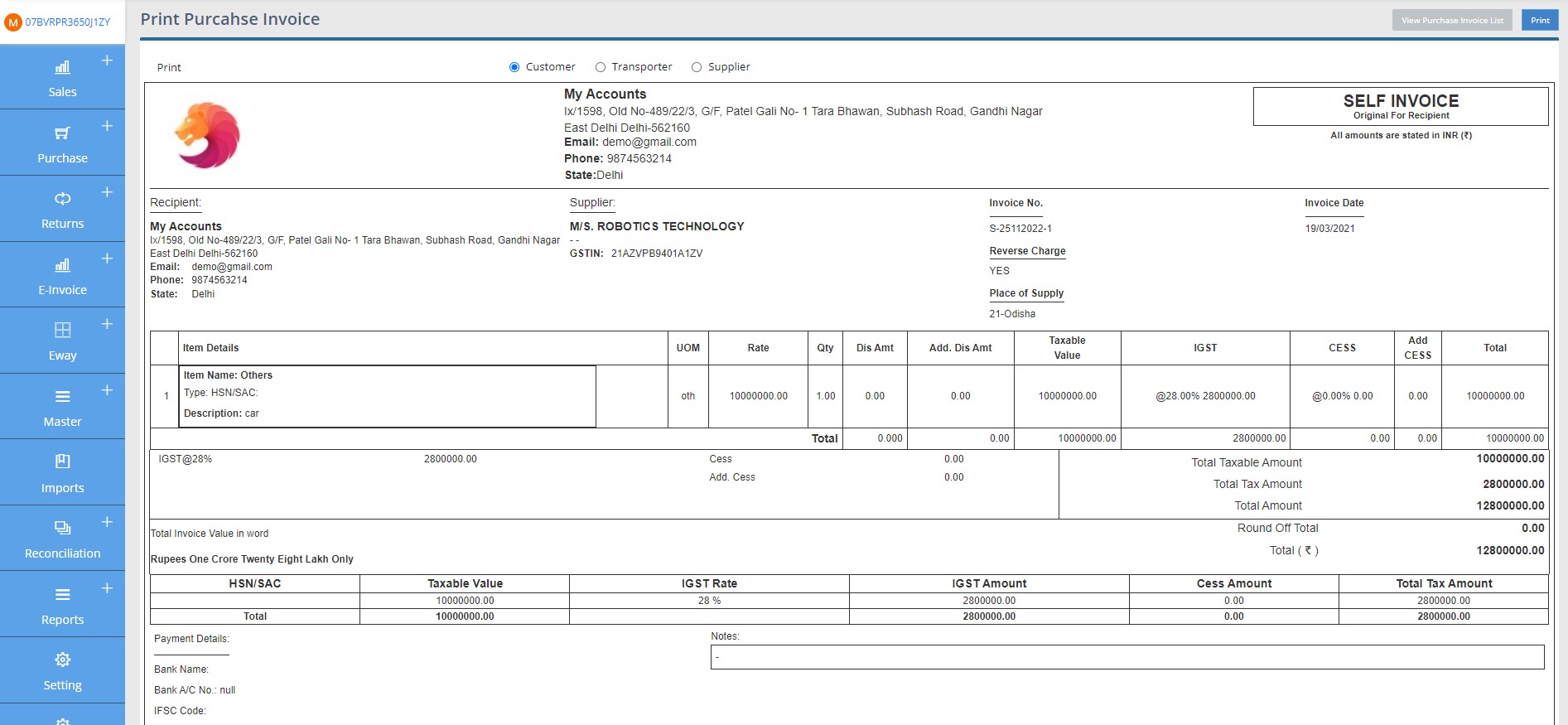Purchase
What options available under Purchase Module of HB GST?
Purchase module in HB GST provides option to create Purchase Invoices and other document related to purchase. Following type of documents can be created by the user under purchase module:
- Purchase Invoice
- Vendor Debit / Credit Notes
- Advanced Payments
- Bill of Supply
- Delivery Challan
- Self-Invoice
How to create Purchase Invoices
Step 1: Click on "Purchase Invoices" button under Purchase module located at the top left of the window & further click on "New Purchase Invoice" button located at the top right of the window to add details of a new Purchase invoice
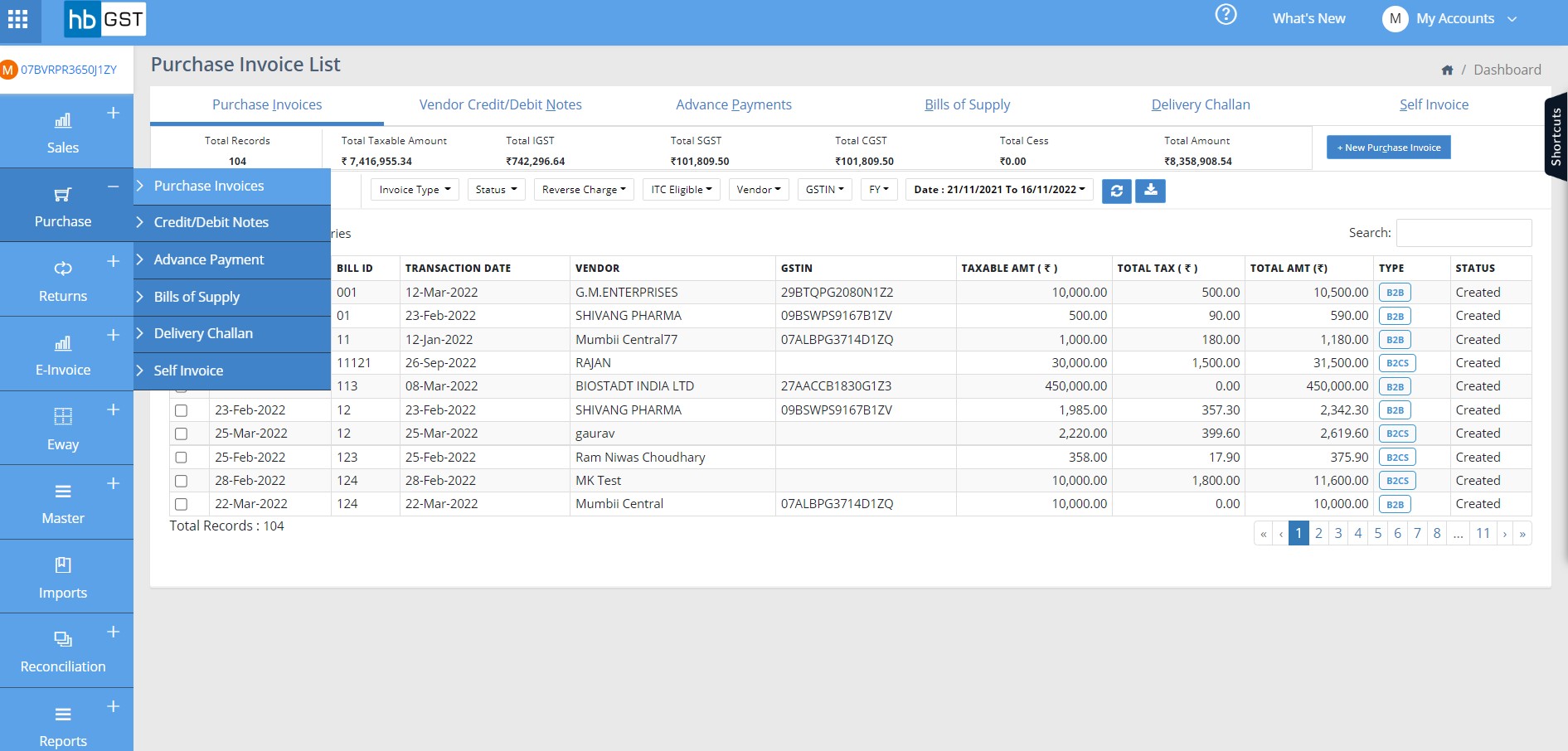
Step 2: At Purchase invoice creation page, add all the details of Purchase invoice and then click on "save" button to save the "Purchase Invoice"
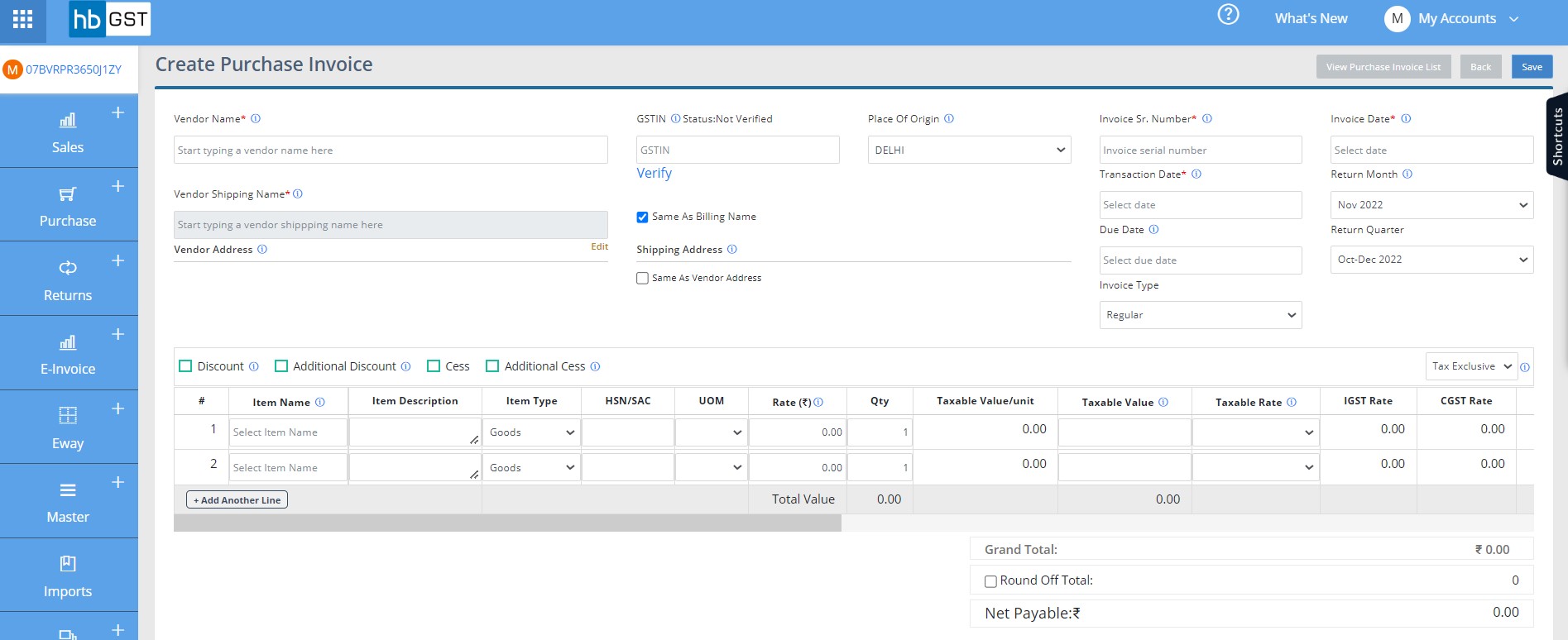
Step 3: Following details are required to be filled to create Purchase Invoice:
Step 3A: Invoice Level Details:
- Vendor Name
- GSTIN
- Place Of Supply
- Vendor Address
- Shipping Address
- Invoice Sr. Number
- Invoice Date
- Transaction Date
- Return Month
- Due Date
- Return Quarter
- Invoice Type
Some fields are available for auto-fill functionality for reduce the time to create the Purchase Invoice:
- For auto fill Vendor details & Vendor Address Save the Client/vendors in Master=>Clients. Please refer Master client save.
- For auto fill Items details, Save the Items in Master=> Items. Please refer Master Items save.
- For auto fill Clients/vendors name with item mapped details, first save the Clients & Items mapping in Settings=> General settings => save clients & Items Mapping setting then Save in Master=> Clients. Please refer Master Client settings.
Step 3B: Item Details:
- Item Name
- Item Description
- Item Type
- HSN/SAC
- UOM(Unit of measurement)
- Rate (₹)
- Discount%/ (₹)
- Discount%/ (₹)
- Qty
- Taxable Value/unit
- Total Discount
- Taxable Value
- Taxable Rate
- Tax Rate (IGST or CGST/ SGST)
- Tax Amount (IGST or CGST / SGST)
- Cess (%)
- Cess (Rs.)
- Cess
- ITC Eligibility
- ITC Claim (%)
- ITC Claim IGST
- ITC Claim CGST/ SGST
- ITC Claim Cess (₹)
- Gross Amount
- Round off Total
- Grand Total
- Advanced Settings for reverse charge.
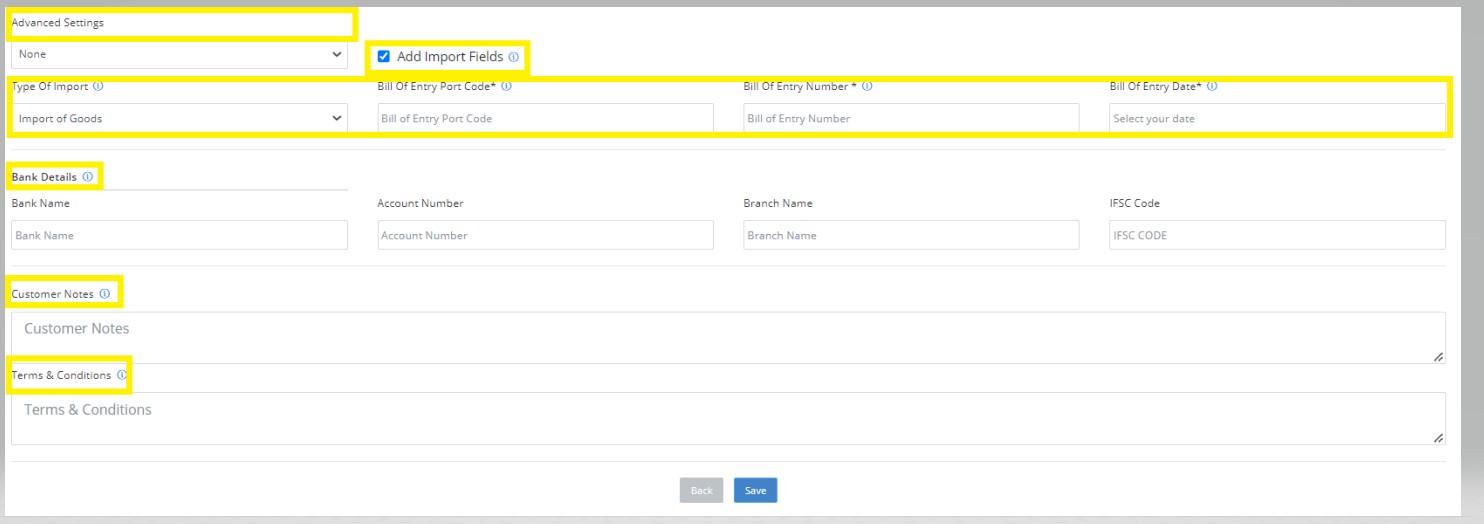
Step 3C: Add Import Fields in case of Import Transaction:
- Type Of Import
- Bill Of Entry Port Code
- Bill Of Entry Number
- Bill Of Entry Date
Step 4: On click of 'Save' button, view page of purchase Invoice can be viewed where all the details entered can be reviewed. User have following option in the purchase invoice:
- Edit Bill.
- Cancel Bill.
- Delete Bill
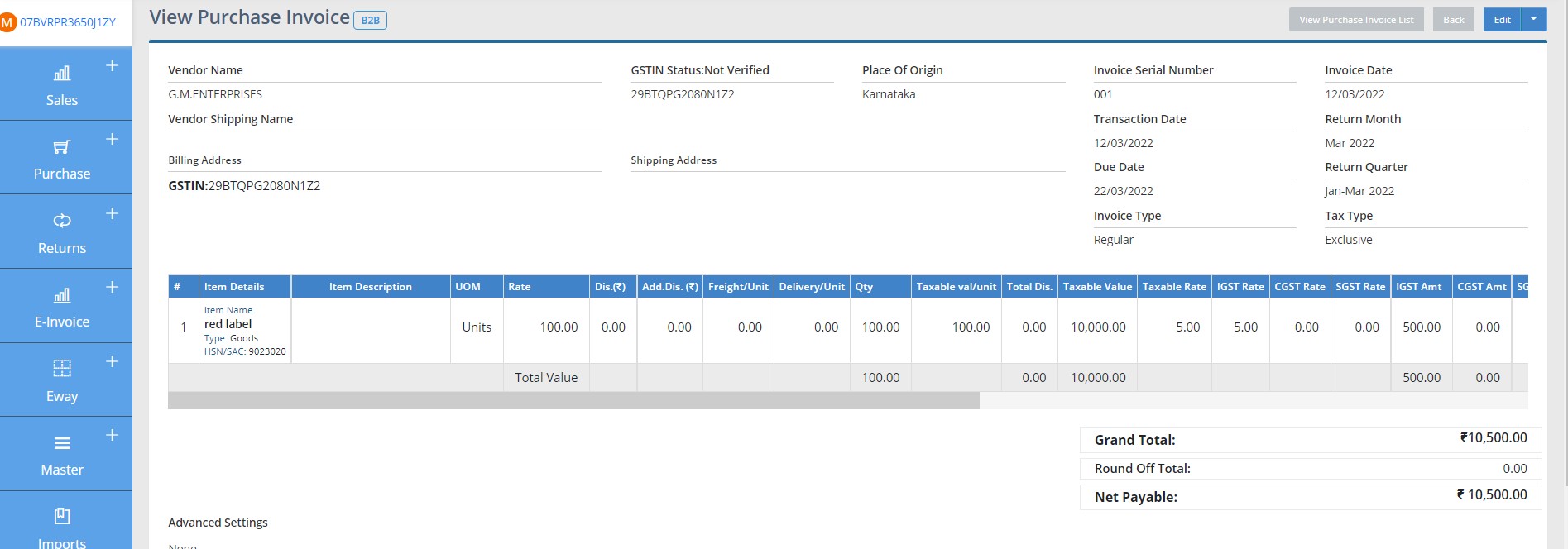
How do I create Debit/ Credit Note for purchase in HB GST?
Step 1: Click on "Credit/Debit Notes" button under Purchase module located at the top left of the window & further click on "Create Cr/Dr Note" button located at top right of window to add details of a new credit/debit note
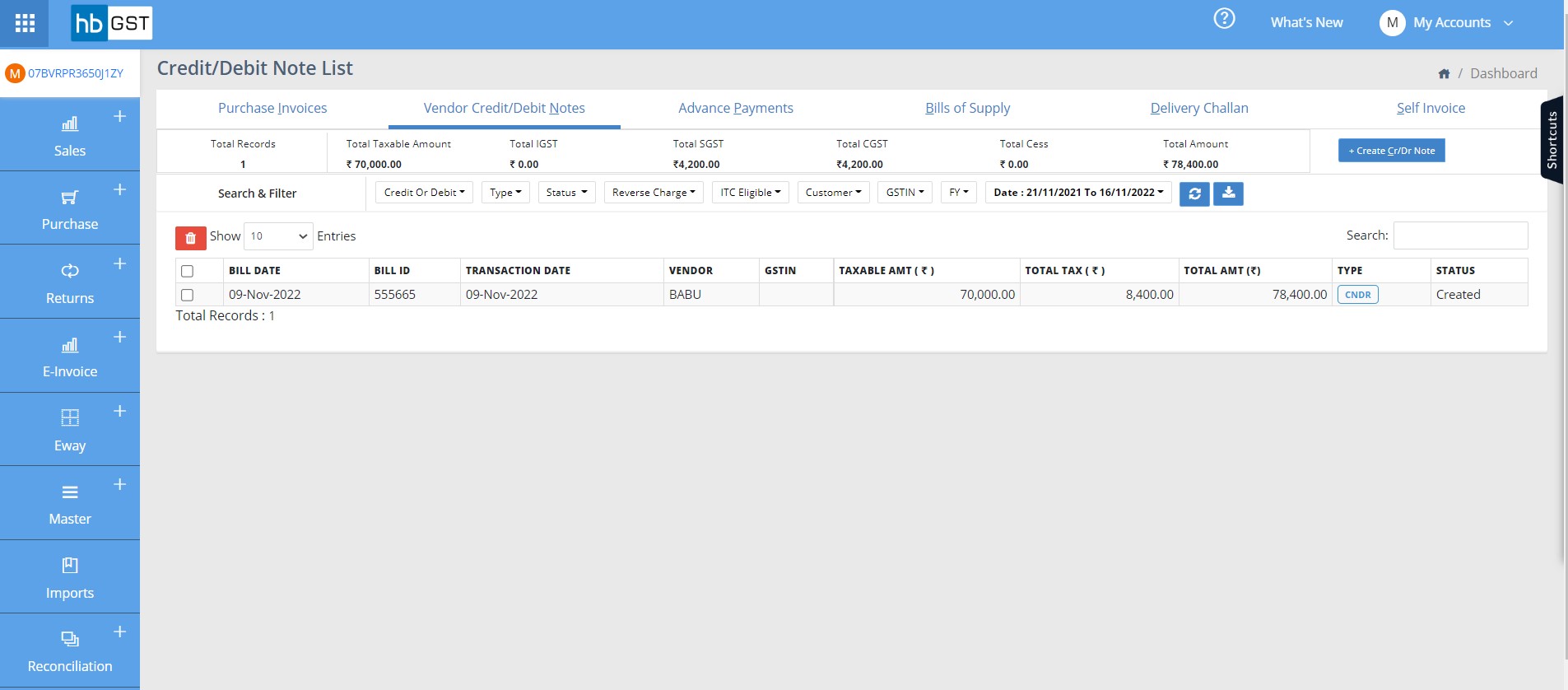
Step 2: You can create Debit Credit Note with unique identification number with the reference of Original Purchase Invoice numbers for every Purchase. All the details of original invoice shall get auto-populated just by entering Original Purchase Invoice number. User just need to make necessary correction.
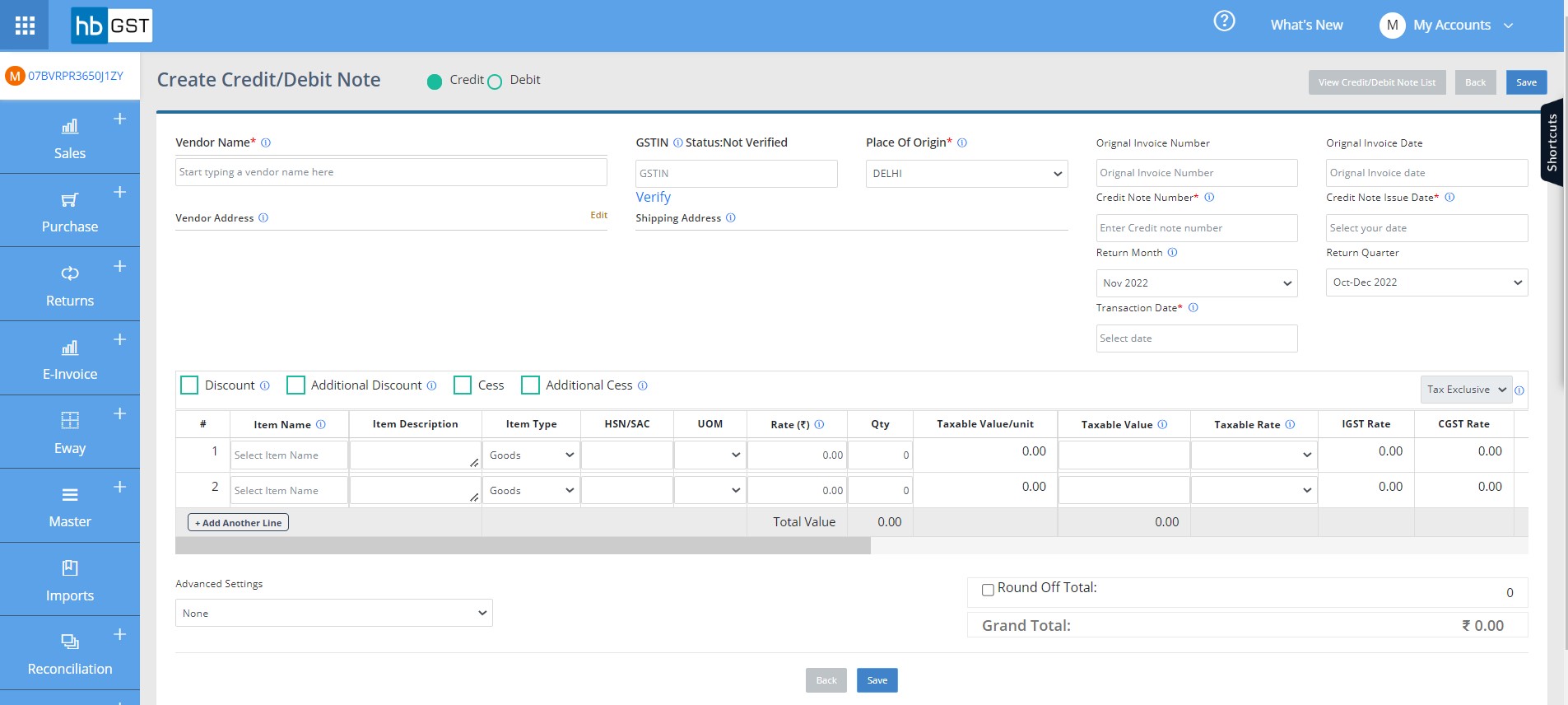
Step 3: Following details are required to be filled to create Purchase Debit Credit Note:
Step 3A: Select Note Type, Debit or Credit.
Step 3B: Note Level Details:
- Original Invoice Number
- Original Invoice Date
- Vendor Name
- GSTIN
- Place Of Supply
- Vendor Address
- Shipping Address
- Invoice Sr. Number
- Invoice Date
- Transaction Date
- Return Month
- Due Date
- Return Quarter
- Invoice Type
Step 3C: Item Details:
- Item Name
- Item Description
- Item Type
- HSN/SAC
- UOM(Unit of measurement)
- Rate (₹)
- Discount%/ (₹)
- Discount%/ (₹)
- Qty
- Taxable Value/unit
- Total Discount
- Taxable Value
- Taxable Rate
- Tax Rate (IGST or CGST/ SGST)
- Tax Amount (IGST or CGST / SGST)
- Cess (%)
- Cess (Rs.)
- Cess
- ITC Eligibility
- ITC Claim (%)
- ITC Claim IGST
- ITC Claim CGST/ SGST
- ITC Claim Cess (₹)
- Gross Amount
- Round off Total
- Grand Total
- Advanced Settings for reverse charge.
Step 4: On click of 'Save' button, view page of Purchase Debit Credit note can be viewed where all the details entered can be reviewed. User have following option in the purchase debit credit note:
- Edit
- Cancel
- Delete
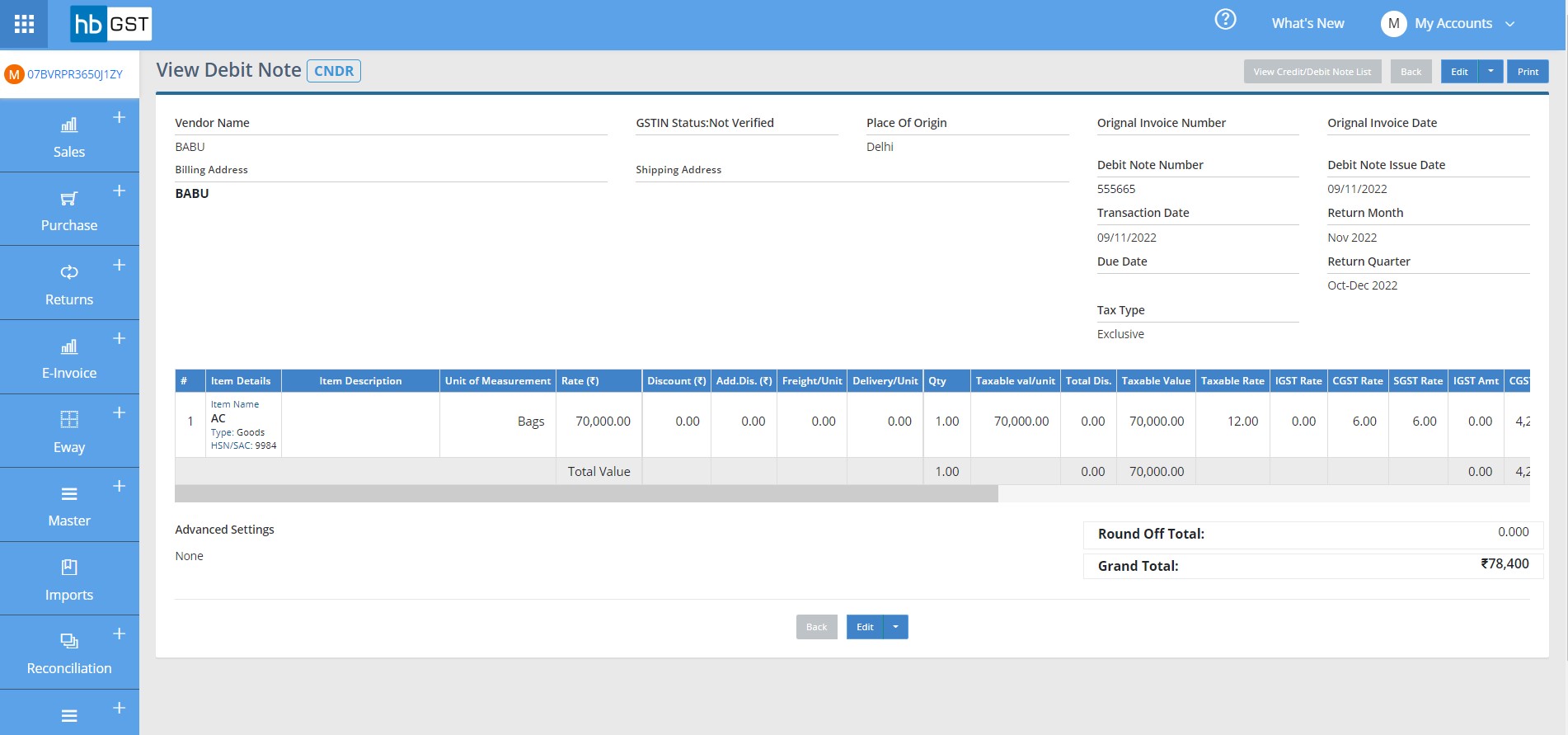
How do I create Advance Payment in HB GST?
Step 1: Click on "Advance Payment" button under Purchase module located at the top left of the window & further click on "Create Advance Payment" button to add details of a new Advance Payment.
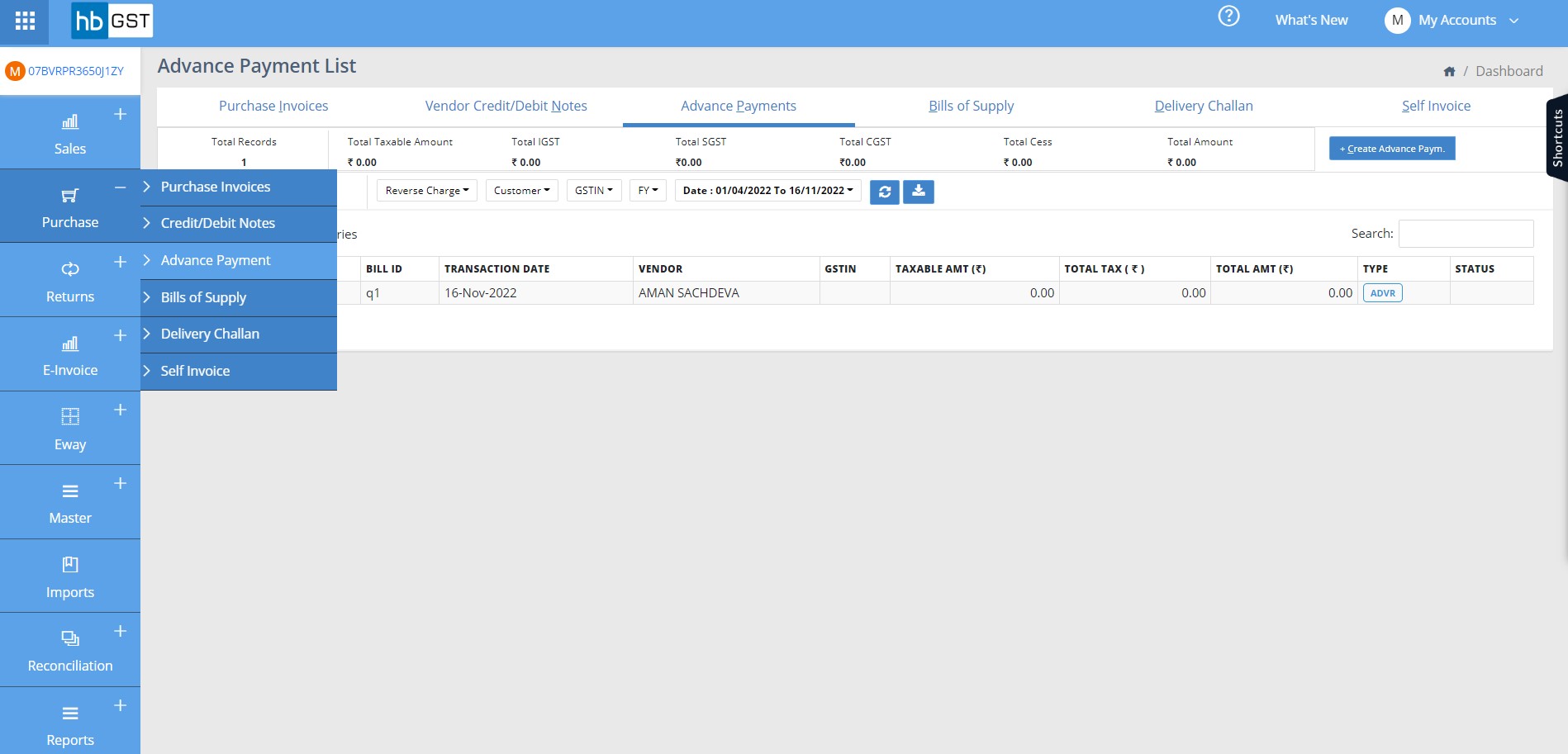
Step 2: At Advance Payments creation page, add all the details of Advance Payment and then click on "save" button to save the "Advance Payment"
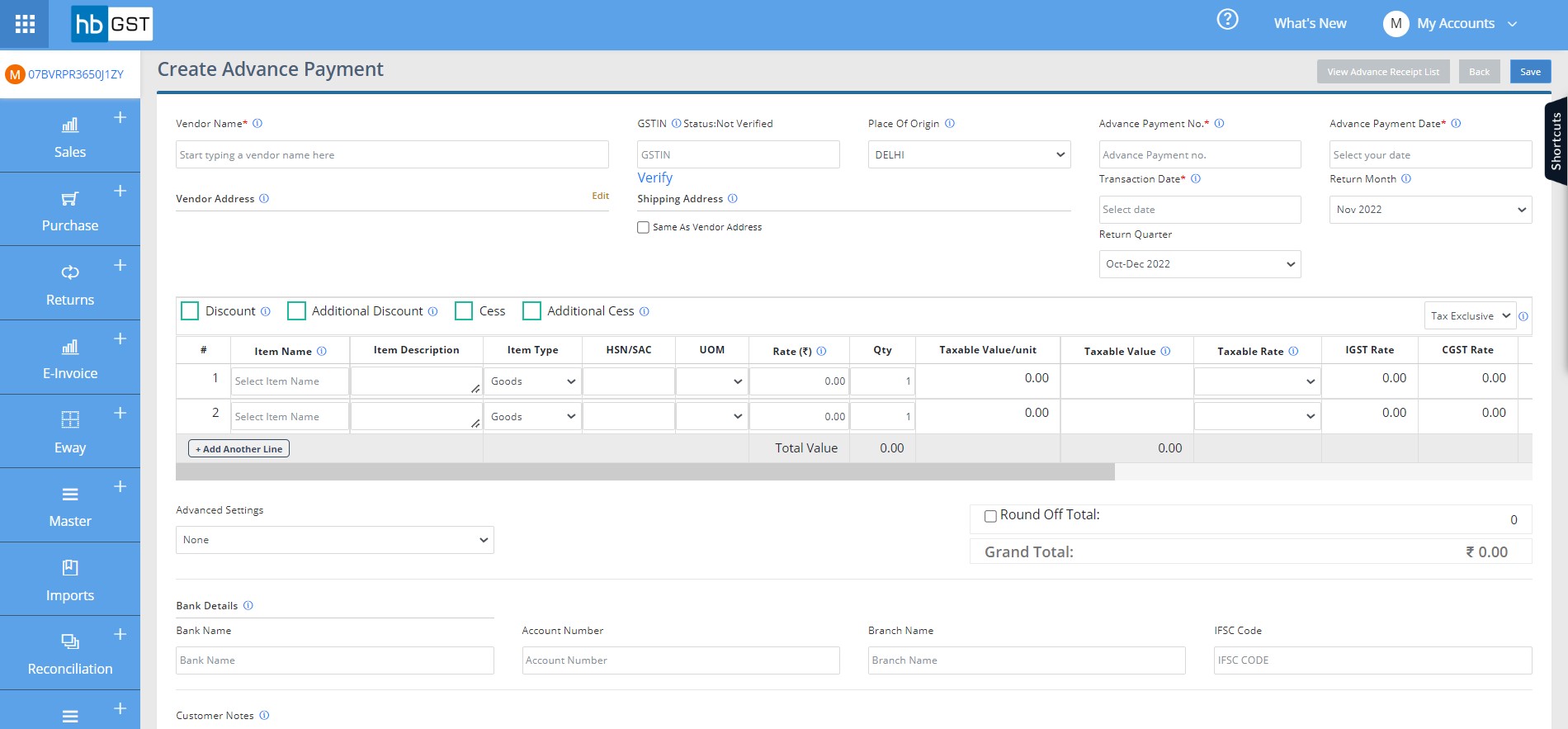
Step 3: Following details are required to be filled to create Advance Payment:
Step 3A: Invoice Level Details:
- Vendor Name
- GSTIN
- Place Of Supply
- Vendor Address
- Shipping Address
- Advance Payment Number
- Advance Payment Date
- Transaction Date
- Return Month
- Return Quarter
Some fields are available for auto-fill functionality for reduce the time to create the Advance Payment:
- For auto fill Vendor details & Vendor Address Save the Client/vendors in Master=>Clients. Please refer Master client save.
- For auto fill Items details, Save the Items in Master=> Items. Please refer Master Items save.
- For auto fill Clients/vendors name with item mapped details, first save the Clients & Items mapping in Settings=> General settings => save clients & Items Mapping setting then Save in Master=> Clients. Please refer Master Client settings.
Step 3B: Item Details:
- Item Name
- Item Name
- Item Description
- Item Type
- HSN/SAC
- UOM(Unit of measurement)
- Rate (₹)
- Discount%/ (₹)
- Discount%/ (₹)
- Qty
- Taxable Value/unit
- Total Discount
- Taxable Value
- Taxable Rate
- Tax Rate (IGST or CGST/ SGST)
- Tax Amount (IGST or CGST / SGST)
- Cess (%)
- Cess (Rs.)
- Cess
- ITC Eligibility
- ITC Claim (%)
- ITC Claim IGST
- ITC Claim CGST/ SGST
- ITC Claim Cess (₹)
- Gross Amount
- Round off Total
- Grand Total
- Advanced Settings for reverse charge.
Step 4: On click of 'Save' button, view page of Advance Payment can be viewed where all the details entered can be reviewed. User have following option in the advance payment:
- Edit
- Cancel.
- Delete
How do I create Purchase Bill of Supply in HB GST?
Bill of Supply to be issued if Registered Person is supplying:
- Exempted Goods
- Exempted Services
- Both or,
- Paying Tax Under Composition Scheme
In these four cases, supplier cannot charge tax from customer and then he raises bill of supply. HB GST provides option to enter such type of supply as purchase in its purchase module.
Step 1: Click on "Bills of Supply" button under purchase module located at the top left of the window & further click on Create "Bills of Supply" button located at top right corner of window, to add details of a new "Bills of Supply".
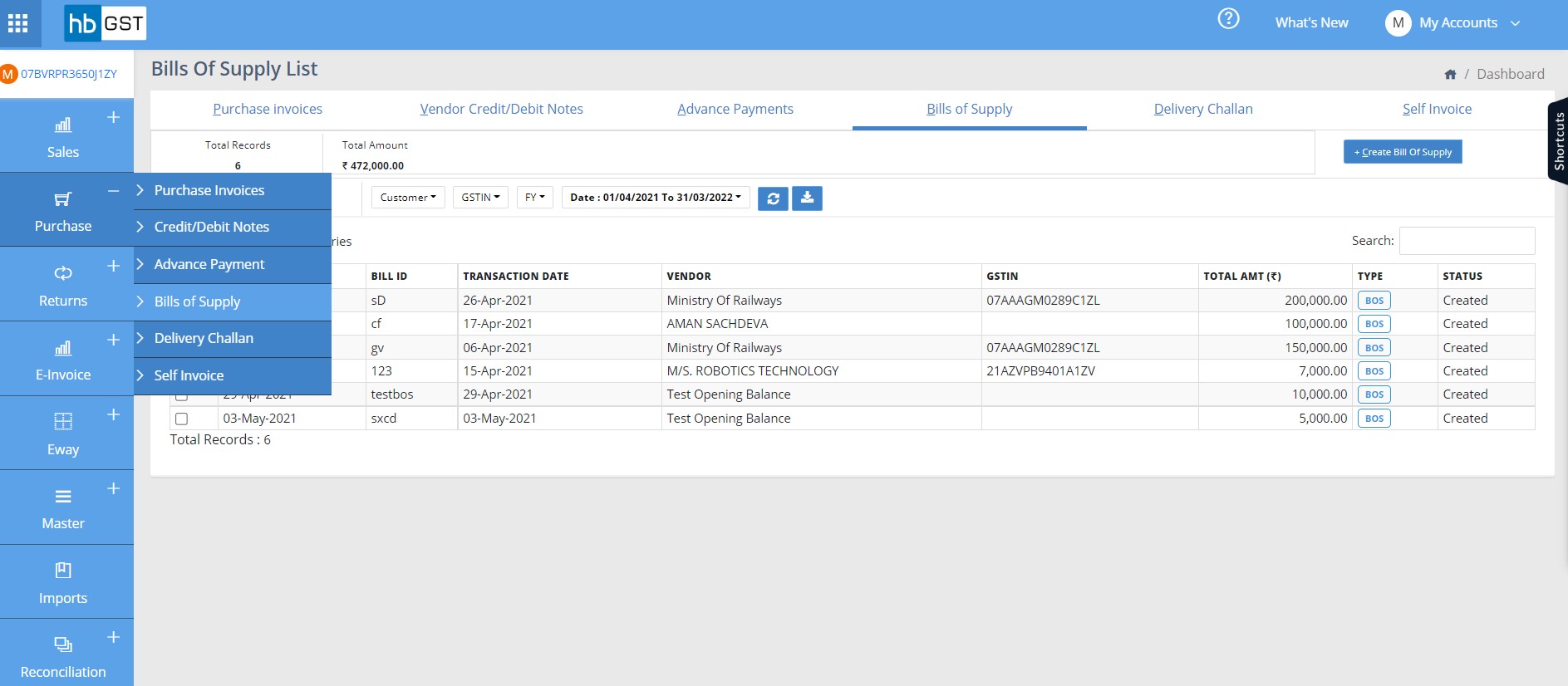
At "Bills of Supply" creation page, add all the details of Bills of Supply and then click on "save" button to save the new "Bills of Supply"
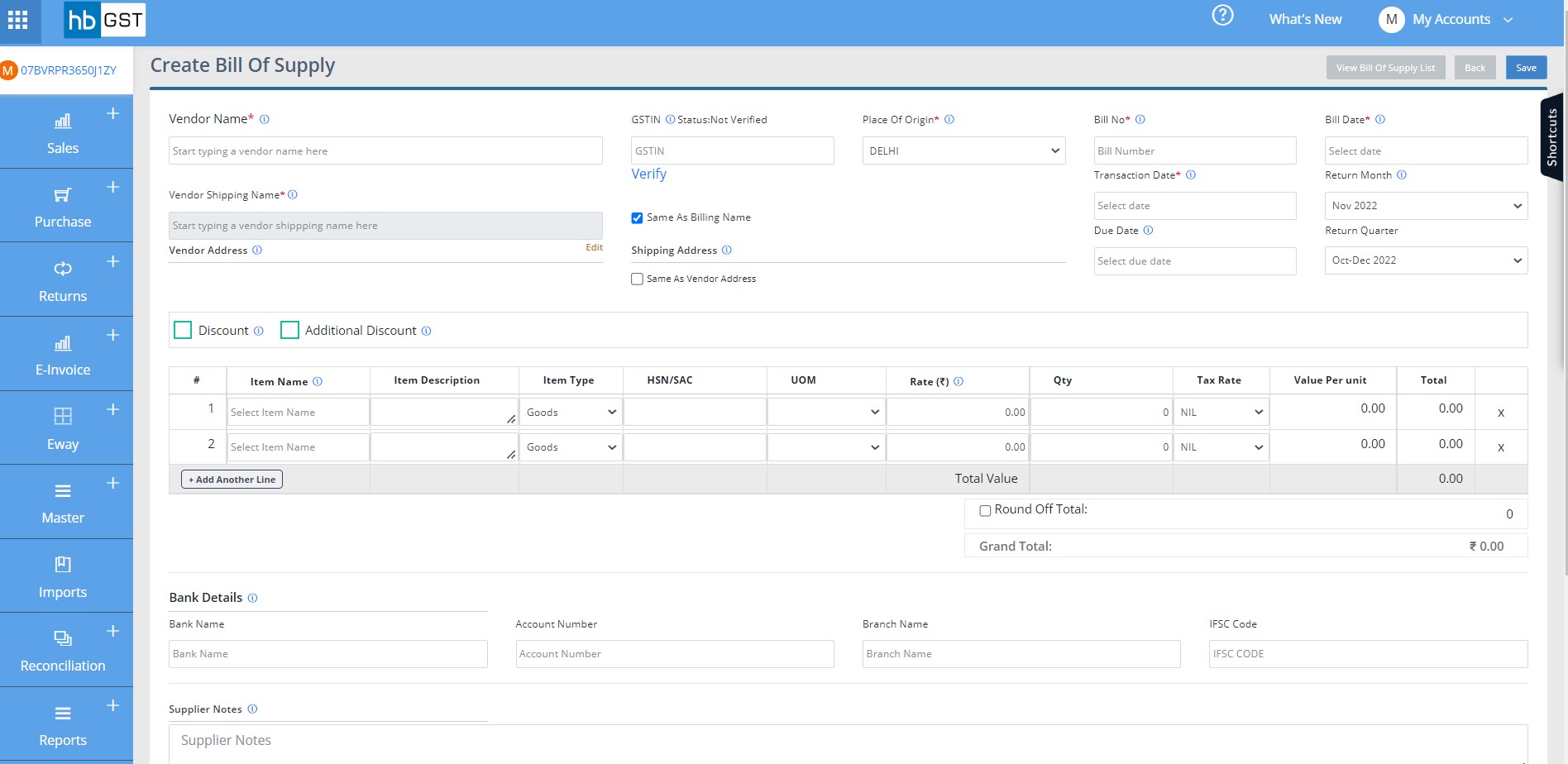
Step 3: Following details are required to be filled to create Purchase Bill of Supply:
Step 3A: Invoice Level Details:
- Vendor Name
- GSTIN
- Place Of Supply
- Vendor Address
- Shipping Address
- Bill Number
- Bill Date
- Transaction Date
- Return Month
- Due Date
- Return Quarter
Some fields are available for auto-fill functionality for reduce the time to create the Purchase Invoice:
- For auto fill Vendor details & Vendor Address Save the Client/vendors in Master=>Clients. Please refer Master client save.
- For auto fill Items details, Save the Items in Master=> Items. Please refer Master Items save.
- For auto fill Clients/vendors name with item mapped details, first save the Clients & Items mapping in Settings=> General settings => save clients & Items Mapping setting then Save in Master=> Clients. Please refer Master Client settings.
Step 3B: Item Details:
- Item Name
- Item Description
- Item Type
- HSN/SAC
- UOM(Unit of measurement)
- Rate ( ₹)
- Discount%/ ( ₹)
- Discount%/ ( ₹)
- Qty
- Tax Rate[Nil/Exempt]
- Value Per Unit
- Gross Amount
- Round off Total
- Grand Total
Step 4: On click of 'Save' button, view page of purchase Bill of Supply can be viewed where all the details entered can be reviewed. User have following option in the purchase Bill of Supply:
- Edit Bill.
- Cancel Bill.
- Delete Bill
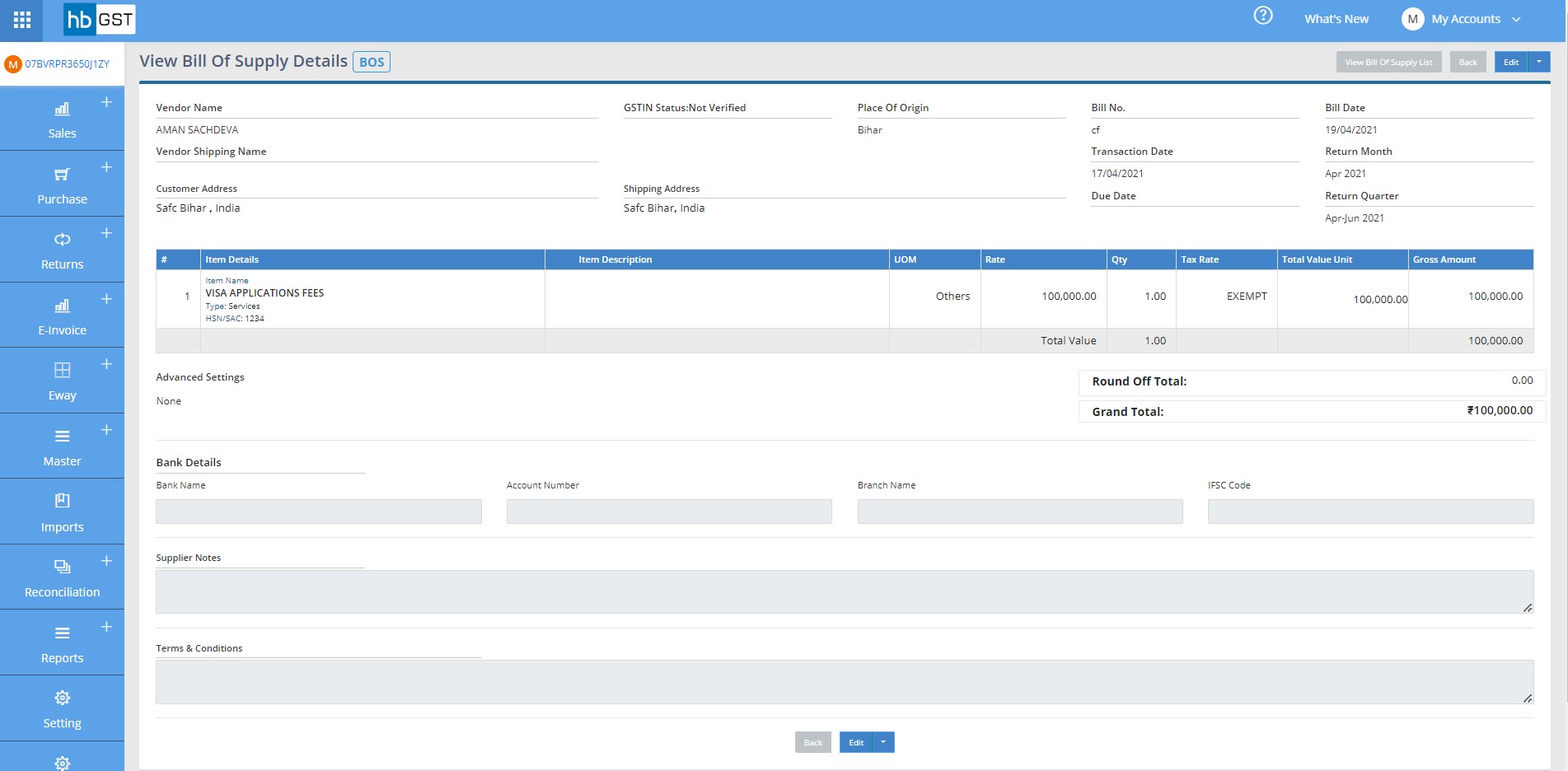
How do I create Inward Delivery Challan in HB GST?
Delivery Challan is basically used in three cases:
- Liquid Gas
- Job Work
- Goods Approval - Not Actual Delivery
Option to create Inward delivery challan is given to comply the requirement of Return ITC-04, where details of goods received from the job work, goods supplied directly from the job work premises and goods sent to another job worker are required to be furnished.
You can create Inward Delivery challans with reference of original Delivery challan (Outward).
Step 1: Click on "Delivery Challans" button under Purchase module located at the top left of the window & further click on Create "Create Delivery Challans" button located at top right corner of window, to add details of a new "Delivery Challan" .
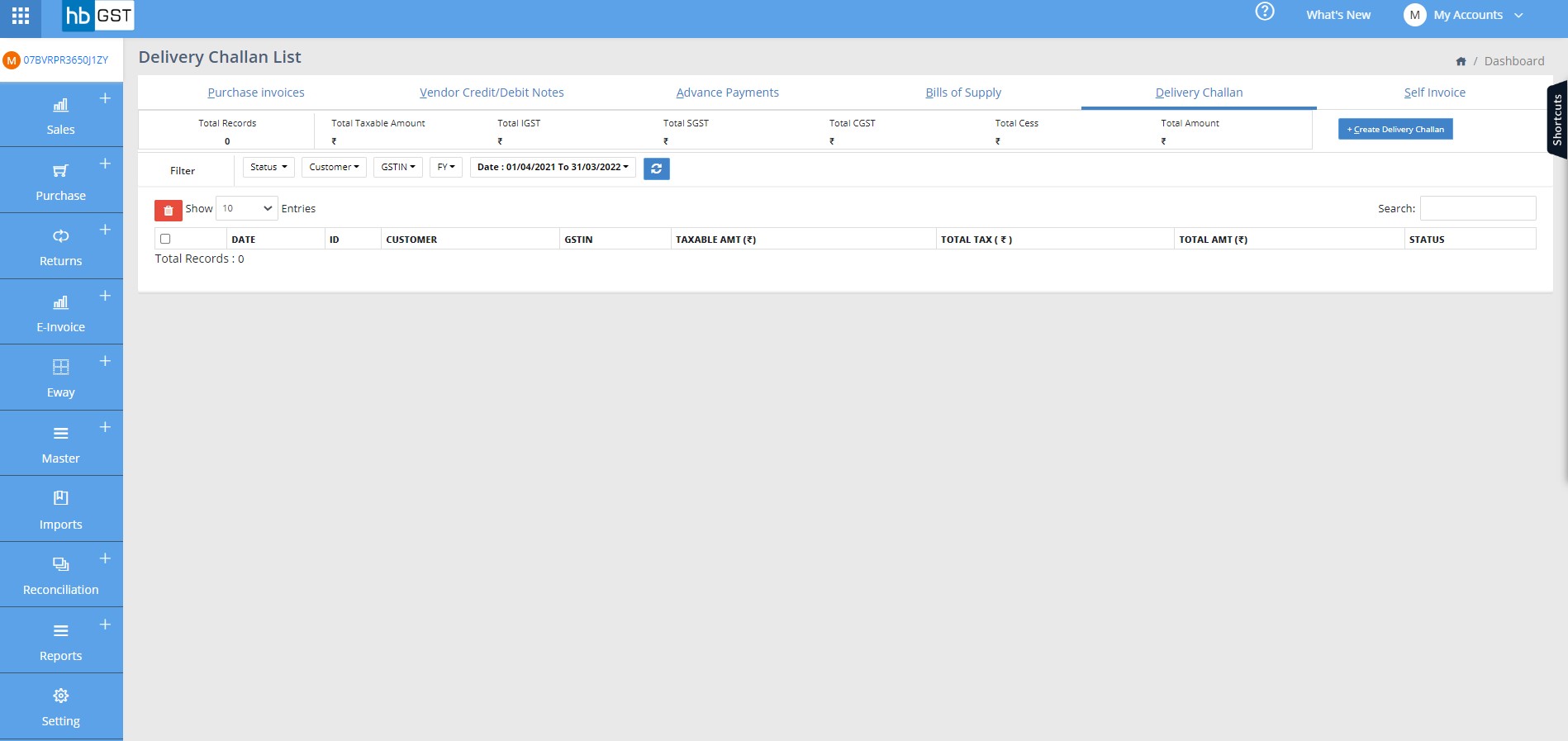
Step 2: For creating a Delivery Challan, go to Delivery Challan tab and click on 'Create Delivery Challan' button. Or it can be accessed Delivery challans sub menu from Sales menu in Dashboard.
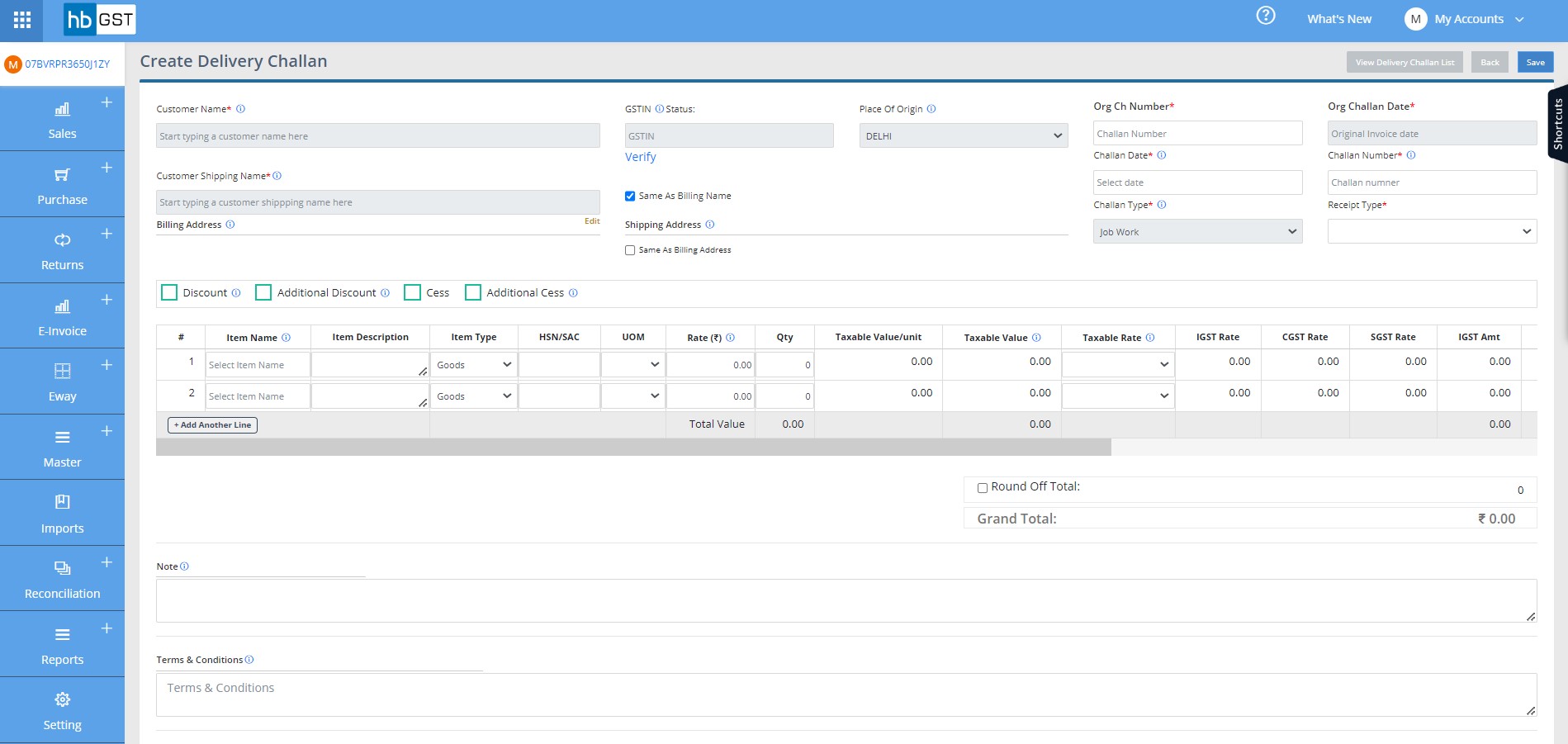
Step 3: Following details are required to be filled to create Inward Delivery Challan:
Step 3A: Challan Level Details:
- Customer Name
- GSTIN
- Place Of Supply
- Billing Address
- Shipping Address
- Original Challan Number
- Original Challan Date
- Challan Date
- Challan Number
- Challan Type
- Receipt Type
Step 3B: Item Details:
- Item Name
- Item Description
- Item Type (Goods / Service)
- HSN/SAC (HSN is an 8 digit code assigned to goods and SAC is a code assigned to services)
- UOM (Unit of measurements)
- Rate (₹)
- Discount %/(₹)
- Additional Discount %/(₹)
- Cess
- Additional Cess
- Qty
- Tax Rate
- Taxable Value/unit
- Taxable Value
- Taxable Rate
- IGST Rate
- CGST Rate
- SGST Rate
- IGST Amount
- CGST Amount
- SGST Amount
- Nature of Job Work
- Lost UQC
- Lost Quantity
- Gross Amount
Step 4: On click of 'Save' button, view page of Delivery Challan can be viewed where all the details entered can be reviewed. User have following option in the Delivery Challan:
- Edit Bill.
- Cancel Bill.
- Delete Bill
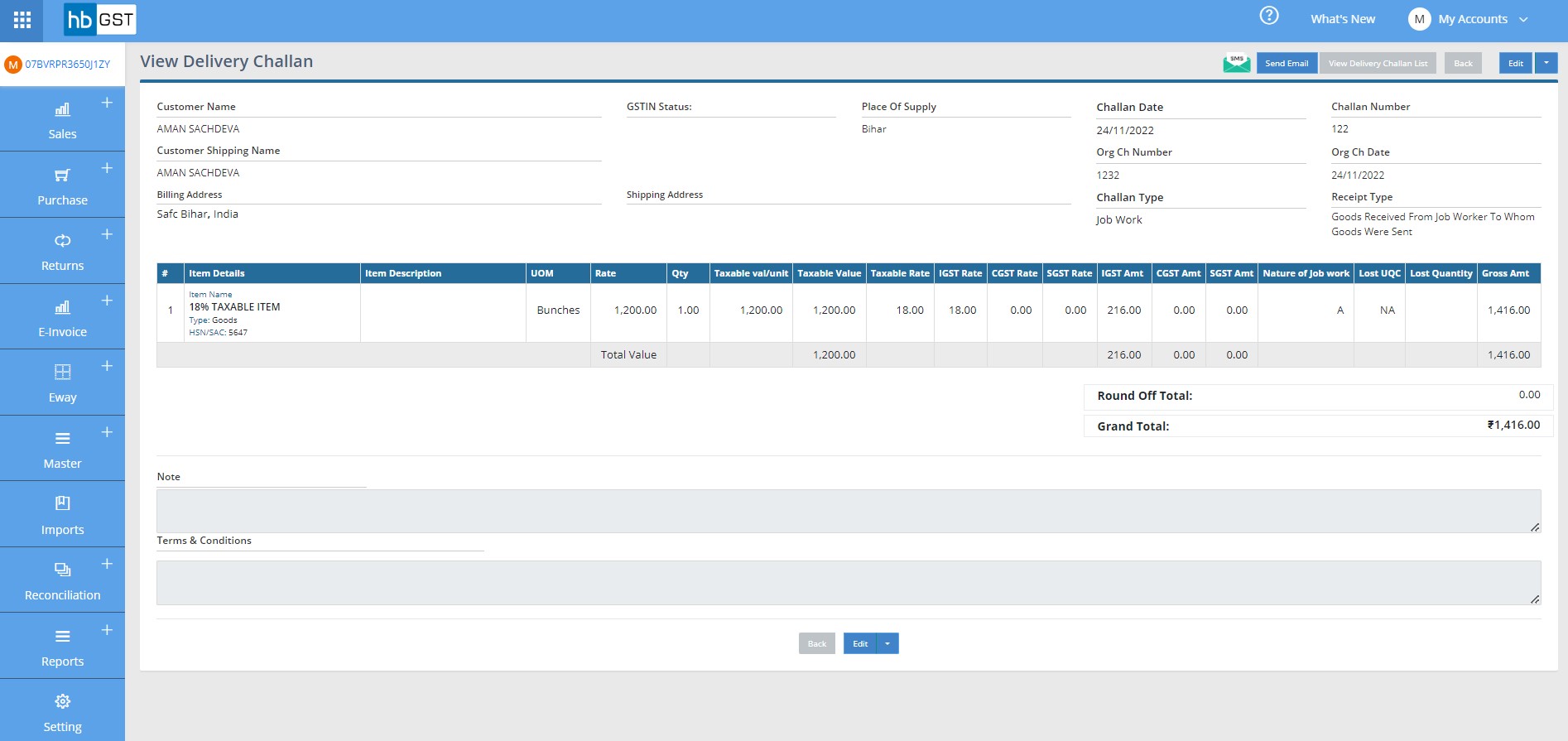
How do I create self-Invoice in HB GST?
Self-invoice is required to be generated by the recipient of supply (Buyer) for supplies received on which reverse charge is applicable. Basically self-invoicing is to be done when supplies received from unregistered person and such purchase of goods or service falls under the reverse charge mechanism. It means buyer will issue invoice to himself. As per the GST provisions a registered person who paying tax under reverse charge can issue a consolidated invoice at the end of every month.
Following steps are necessary to generate Self-Invoice:
Step 1: For adding a Self-Invoice, go to Purchase Invoice tab and click on 'New Purchase Invoice' button at the top right corner of window.
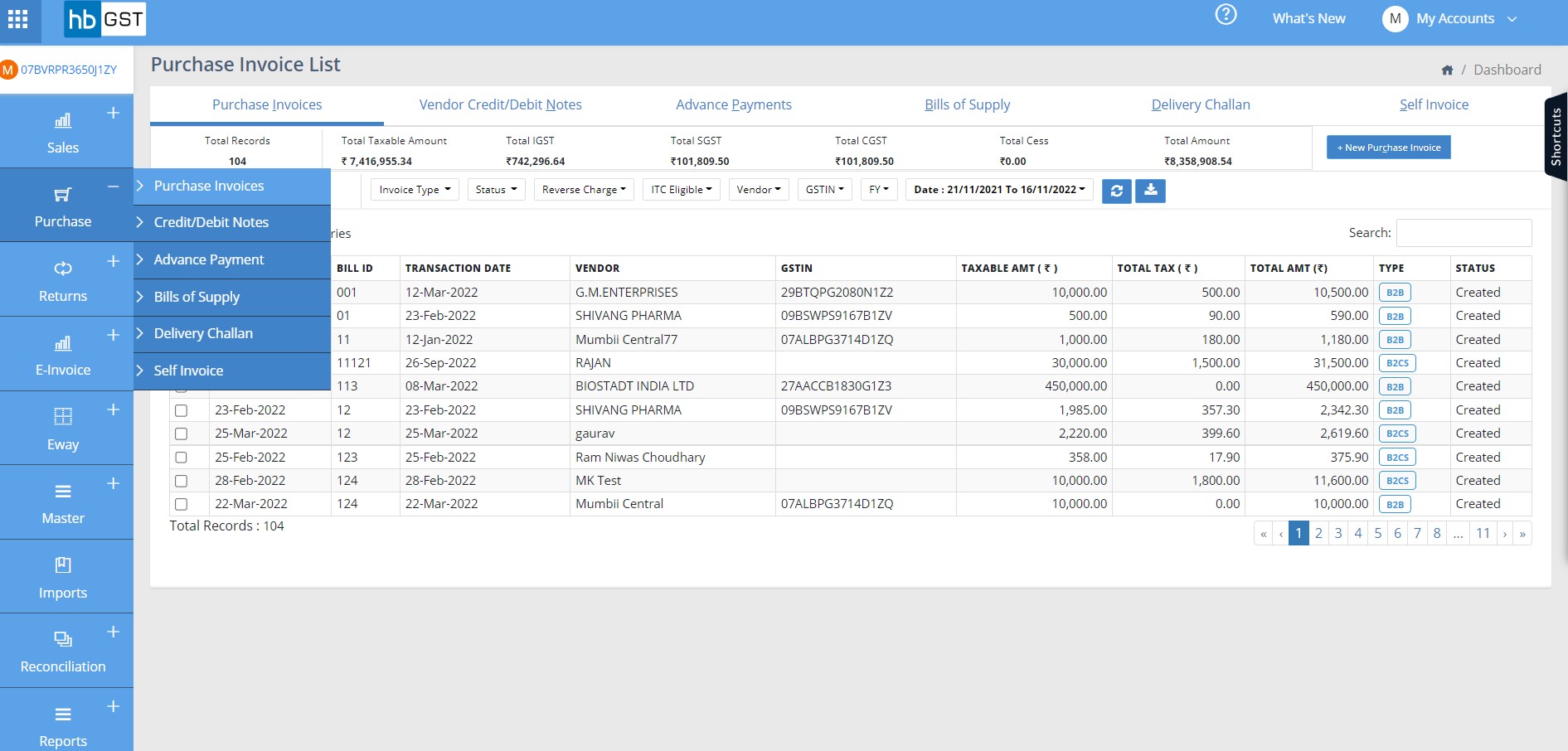
Step 2: Select Reverse Charge under the 'Advanced Setting' then Click on the self-invoice checkbox at purchase invoice creation page.
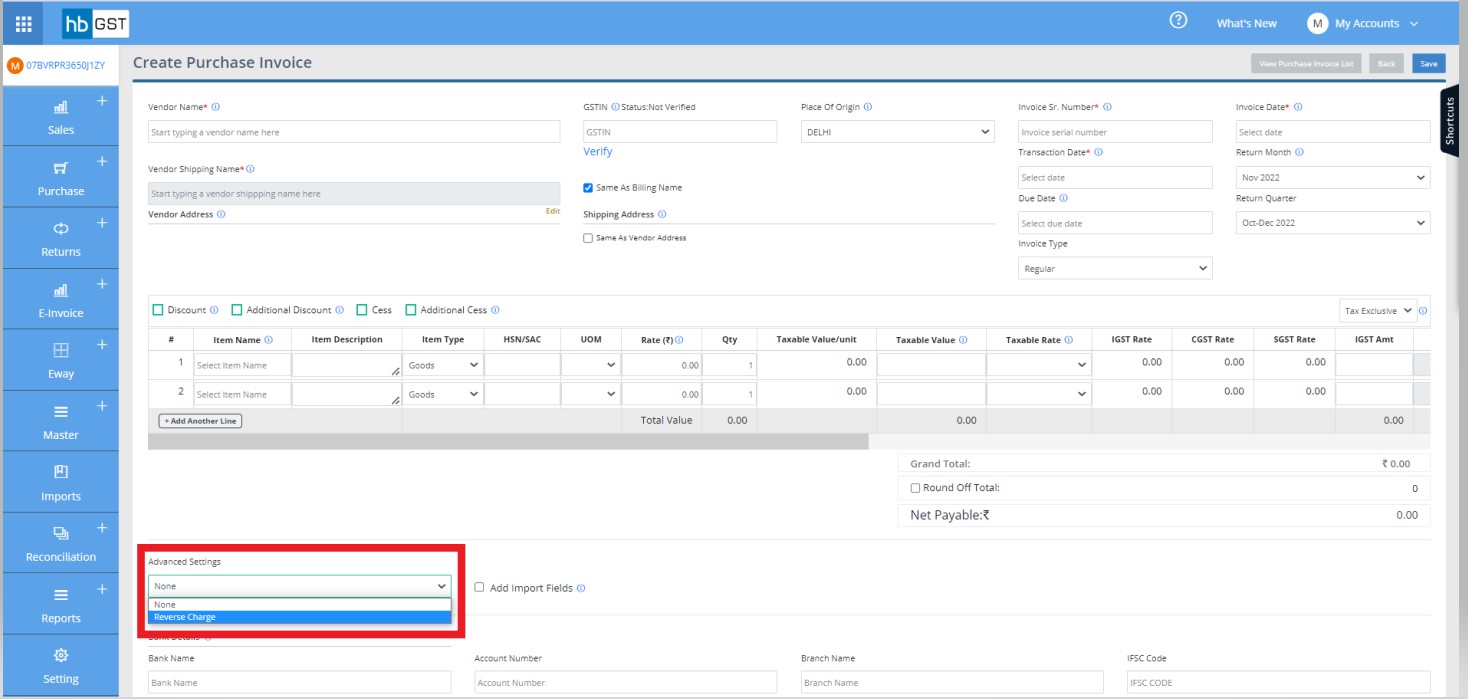
Step 3: Fill the other details of the purchase Invoice:
Step 3A: Invoice Level Details:
- Vendor Name [Self-Name]
- GSTIN [Self-GSTIN]
- Place Of Supply
- Vendor Address [Self-Address]
- Shipping Address [Self-Address]
- Invoice Sr. Number
- Invoice Date
- Transaction Date
- Return Month
- Due Date
- Return Quarter
- Invoice Type
Step 3B: Item Details:
- Item Name
- Item Description
- Item Type
- HSN/SAC
- UOM(Unit of measurement)
- Rate (₹)
- Discount%/ (₹)
- Discount%/ (₹)
- Qty
- Taxable Value/unit
- Total Discount
- Taxable Value
- Taxable Rate
- Tax Rate (IGST or CGST/ SGST)
- Tax Amount (IGST or CGST / SGST)
- Cess (%)
- Cess (Rs.)
- Cess
- ITC Eligibility
- ITC Claim (%)
- ITC Claim IGST
- ITC Claim CGST/ SGST
- ITC Claim Cess (₹)
- Gross Amount
- Round off Total
- Grand Total
Advanced Settings for reverse charge.
Step 4: On click of 'Save' button, view page of self-Invoice can be viewed where all the details entered can be reviewed. User have following option in the self-invoice:
- Edit Bill.
- Cancel Bill.
- Delete Bill
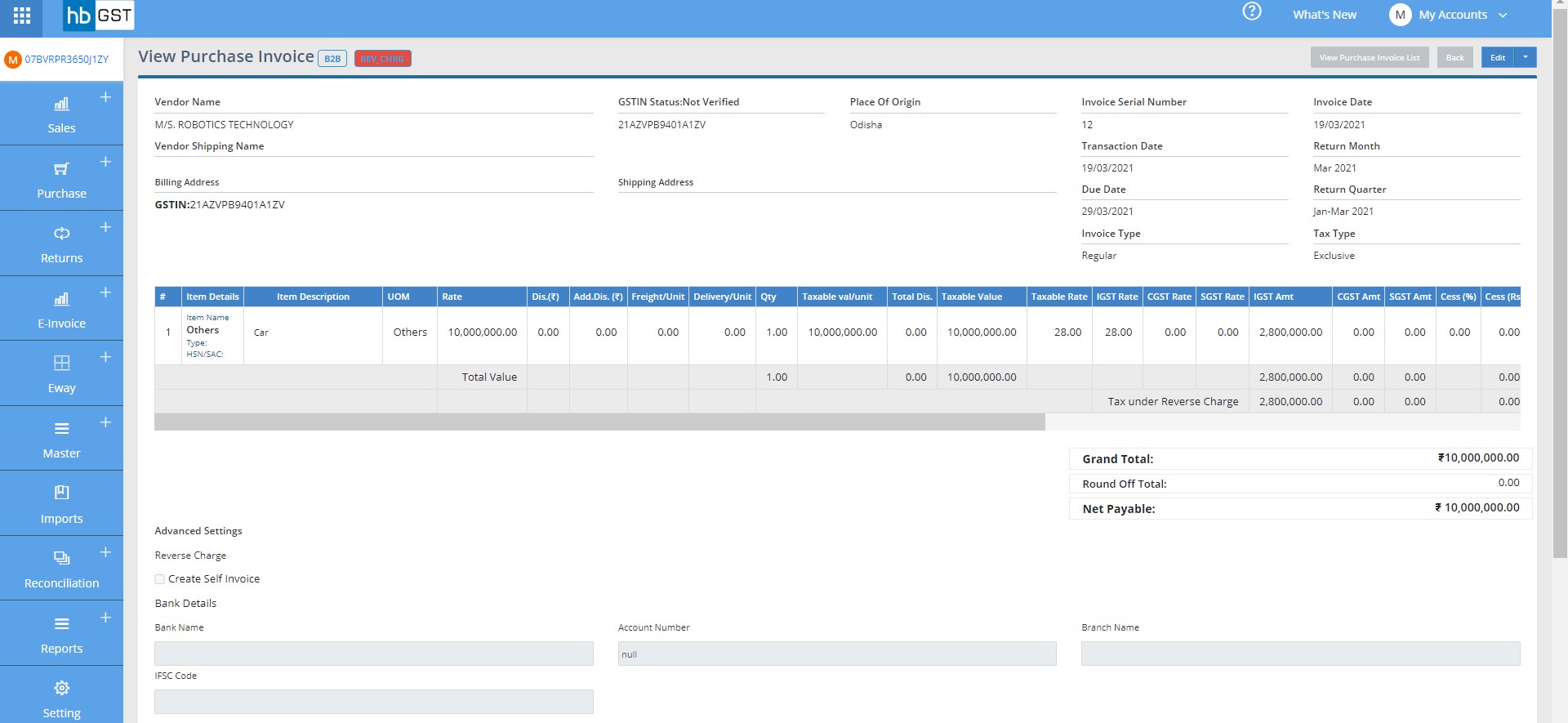
Or it can be accessed from the Self Invoice Listing page, click on the document to open it.

Step 5: User can print Self-Invoice as well by clicking on the 'Print' button in the view page.

Step 6: Preview the invoice and click on 'Print' button to proceed.
